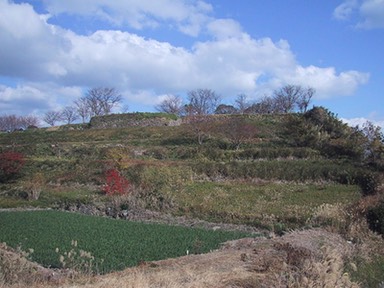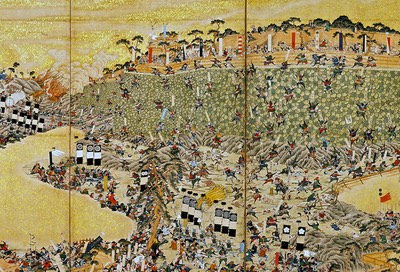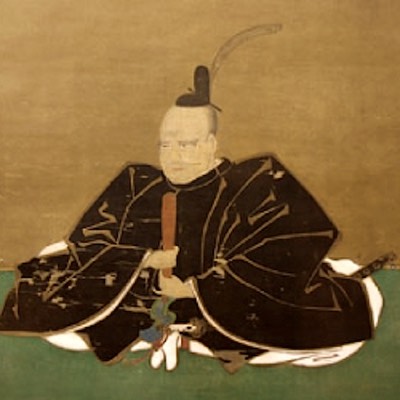The Shimabara rebellion, so called after the peninsula on which it played out was the last serious military conflict to upset the centrally imposed order of the Edo Bakufu. Chief source of the rebellion was the harsh regime of the local daimyō, Matsukura Shigehari, who imposed such heavy taxes on the already severely impoverished populace that many simply starved. The rebellion was led by a certain Amakusa Shiro, the son of a retainer of the Christian daimyō, Konishi Yukinaga.
Shiro, too, was a Christian, and so were most of the rebels, who at the peak of the rebellion numbered more than twenty thousand. Among them were a considerable number of rōnin, master-less samurai, but most of them were simple peasants, who had been joined by their womenfolk and children and had ensconced themselves in Hara castle, which had been standing empty for several years. Having erupted on December 17, 1637, the first attempts to suppress the rebellion followed within weeks. They were undertaken by the governor of Nagasaki, but his forces, only a few thousand strong, suffered a crushing defeat and had to retreat to Nagasaki.
The governor now called in the help of the Bakufu, and it was on their orders that the local military clans raised a force of well over a hundred thousand troops, including some six thousand raised by the Ogasawara. Yet in spite of their overwhelming strength (and in spite of help from the Dutch, who fired more than four hundred rounds into the stronghold from one of their ships) it took the Bakufu troops up until April 15 before the stronghold finally fell. More than ten thousand Bakufu troops died in the course of the siege, but all the rebels, including women and children were killed on the castle’s fall.
The Shimabara Rebellion was the last time Musashi saw action on the battlefield. Though Mizuno Katsunari also took part in the rebellion’s suppression, this time Musashi rode into battle under Ogasawara Tadazane (1596–1667), the daimyō of the Kokura fief and the master of Musashi’s son, Iori. Yet like during the siege of Osaka castle, Musashi was not part of the common troops but was assigned as part of an escort to Tadazane’s son, Nagatsugu. The Bushū denraiki, describes how:
始終、鎧は着し玉はず、純子の廣袖の胴着を着し、脇指をに腰さし、五尺杖をつき、信州の馬の側らに居らる。城乘の時、賊徒石を抛つ。馬前に來る石を、「石がまいる」と言葉をかて、五尺杖にてつき戻し、落城に及んでは、例の薙刀にて數人薙伏られしと也。
From start to finish Musashi was at Lord Nagatsugu’s side, never putting on a harness but simply wearing a silk damask wide-sleeved undergarment, and tucking into his belt two daggers, while leaning on a five-foot wooden staff. During the castle’s siege the rebels threw down stones, but Musashi leapt in front of the horse and shouting “beware of the stones,” fended them off with his staff. And when the castle finally fell he slew countless rebels with his halberd.
Though Hōkin makes no mention of it, it is widely believed that Musashi was seriously wounded during the siege of Hara castle. This is also borne out by a letter written shortly after the suppression of the rebellion and addressed to Arima Naozumi, the lord of Nobeoka castle in the province of Hyūga, in which Musashi mentions that he was hit by two rocks.
More than two decades had passed since the summer siege of Osaka castle, but Musashi had not forgotten the time he had fought alongside Katsunari son during the fierce battle at the Dōmyōji is borne out by the Sōkyū sama o-degatari, which describes how, in response to criticism at the clamorous arrival of Katsunari’s troops during the siege of Hara castle:
宮本武蔵という者是を聞き、我先年、日向守殿家にこれあり、彼軍立よく知れり、凡慮の及ばざる大将なり、各評判の及ぶ処にあらず。
Miyamoto Musashi remarked that he had rode into battle under Lord Katsunari some years ago and that he was well acquainted with his manner of dispersing the troops, that he was a commander who exceeded the though of commoners, and that his style of leadership was beyond reproach.
The Shimabara Rebellion was also the first—and only—time Musashi was joined by his son, Iori (see Musashi’s Children). Not a warrior like his father, he probably served Tadazane in a civil capacity, safely behind the battle lines. Yet is seems Iori was of great use, for the Harima kagami claims that he “rendered distinguished services to his lordship” in the course of the battle, in reward for which his stipend was increased to three thousand kook, until he was finally raised to the rank of senior retainer.
Any queries of remarks? Launch or join a discussion at our new FORUM


